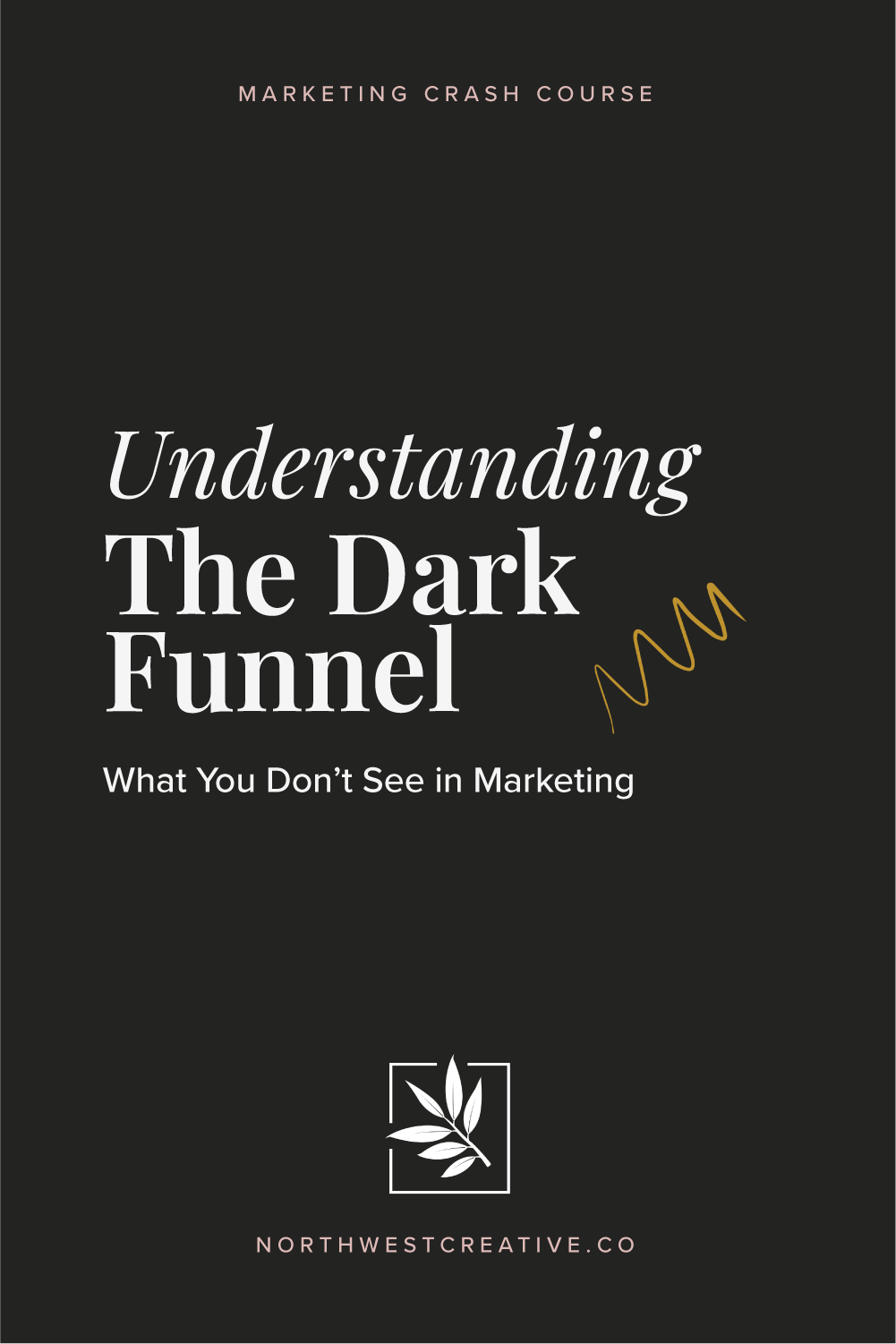What You Don’t See in Marketing: Understanding the Dark Funnel
You’ve probably heard about the marketing funnel. I harp about this a lot. It’s the clear, measurable path people take from discovering your business to becoming a paying customer (and then becoming a loyal fan).
But here’s the deal: most of that journey happens where you can’t see it.
That invisible space is called the dark funnel (sounds spooky, right?). And if you’re not paying attention to it, you’re missing some of your best opportunities to build trust and grow.
How to Understand and Navigate The Dark Funnel in Your Small Business
1. So, What Exactly Is the Dark Funnel?
The dark funnel is all the behind-the-scenes stuff that influences someone’s decision to buy from you. But none of it shows up in your analytics. It’s those seemingly invisible touch points a person experiences without your brand knowing it.
Here are some examples:
A friend recommending your business over coffee
Someone quietly reading your LinkedIn posts for months before reaching out
A past customer forwarding your email to a colleague
A person watching your reels without ever hitting “like”
These moments matter. They’re not trackable by data tools, but they absolutely shape how people perceive your brand and whether they’ll do business with you.
2. Why This Matters for Small Businesses
If you’re running a small business, every bit of visibility counts. But here’s the catch: you can’t measure every meaningful interaction. That is so hard for those of us who love data and analytics! It doesn’t mean you can’t influence those touch points, though.
When you realize that influence often happens in invisible spaces, you stop chasing every click and start focusing on what actually builds trust:
Consistent value
Authentic relationships
Clear, purpose-driven messaging
Understanding the dark funnel helps you connect the dots between what you see in your analytics and what’s really driving decisions behind the scenes.
3. Identifying Your Audience Within the Dark Funnel
To influence those invisible touch points, start by getting clear on who you’re talking to and why they might care about what you do.
Most small business owners focus on demographics like age, income, and location. That’s great! But it’s only half the story.
You also need to know:
What they value
What they’re struggling with
What motivates their decisions
Once you understand their mindset, you can start showing up where they naturally spend their time—online and offline.
That might mean joining a local Facebook group, sponsoring a community event, being a guest on an industry podcast, or publishing a story on your blog that speaks directly to their values.
4. How to Reach People in the Shadows
Here’s the challenge: people in your dark funnel aren’t ready to buy yet. They’re observing. Watching. Gathering impressions.
So instead of trying to “convert” them right away, use your magic to build curiosity and connection first.
Try this:
Create content that teaches something genuinely helpful.
Blog posts, short videos, or free guides that solve real problems attract attention naturally.Use stories from real people.
Customer testimonials, case studies, or even your own behind-the-scenes moments add credibility.Be findable.
Update your Google Business Profile, add your website link everywhere, and keep your messaging consistent.
Each of these small touch points helps someone recognize and remember you long before they ever reach out or purchase.
5. Tools to Help You See the Invisible
Honestly, you’ll never see everything, but you can illuminate parts of the dark funnel using smart tools.
Here are a few to start with:
Google Analytics and Google Tag Manager: Track how visitors move through your site.
Full Story or Microsoft Clarity: Visualize how users interact with pages. If you thought the dark funnel concept was creepy, this will really get you.
Sprout Social or Later*: Monitor engagement trends and mentions on social media. You can also try Meltwater for social listening.
CRM systems (like HubSpot or Zoho): Keep track of customer interactions across all touchpoints.
These tools help you piece together a more complete picture of your audience journey, even when some of it stays off the radar.
6. How to Measure What Matters
You might not be able to measure every single whisper of influence, but you can track growth in key areas that reflect healthy engagement. (And the data nerds rejoiced again!)
Here’s what to focus on:
Social media saves and shares (not just likes)
Referral traffic and backlinks
Direct traffic (people typing your URL = brand recall!)
Email replies and click-throughs
Word-of-mouth referrals (it’s a good practice to ask paying customers and clients how they heard about you)
If those numbers go up, you’re likely doing something right, even if the “how” isn’t 100% clear. Consider it a win!
Here’s the point.
You can’t control everything in marketing, and that’s okay.
The dark funnel reminds us that people buy from people. It stems from trust, connection, and reputation built over time.
When you invest in relationships, tell meaningful stories, and serve with purpose, the results will follow—whether or not the data shows it.
So keep showing up. Keep sharing.
Because somewhere, someone is watching (sorry to make it creepy again), and they’re closer to saying yes than you realize.
Ready to grow your visibility without burning out?
I can help you create a plan to influence the dark funnel that actually works.






